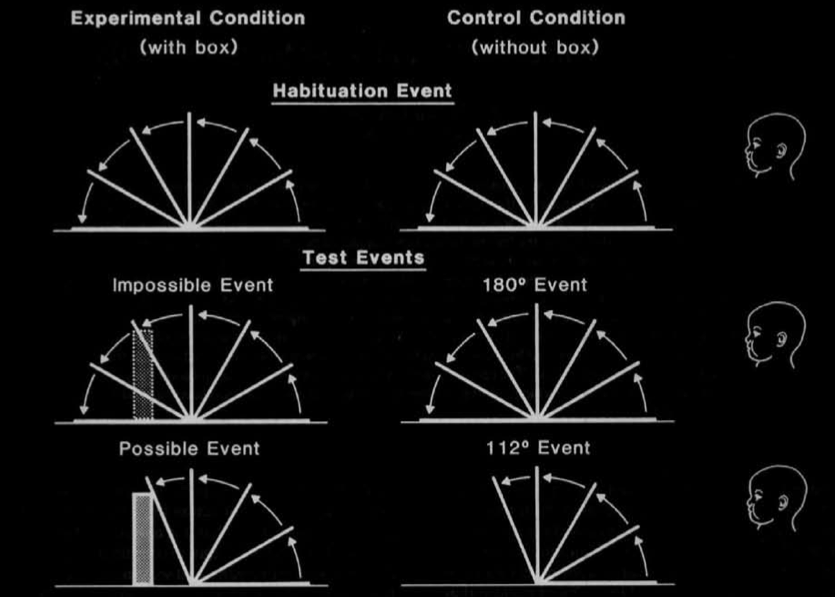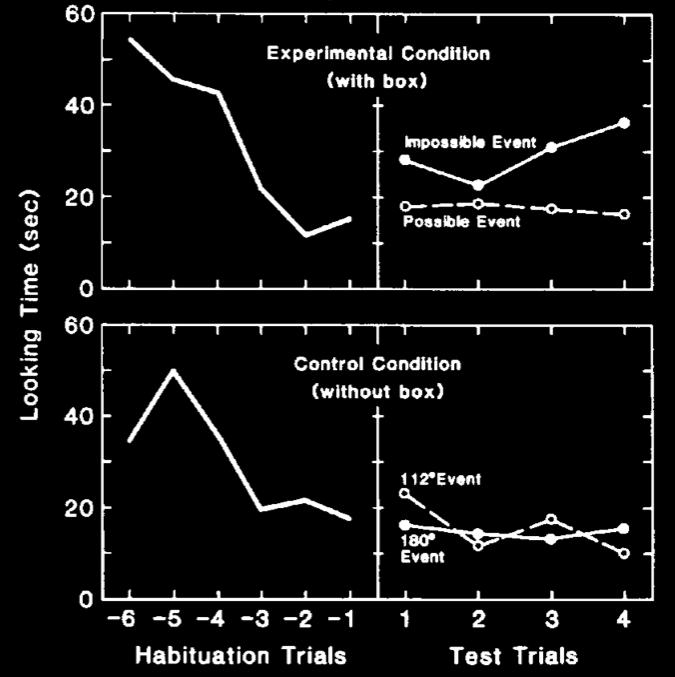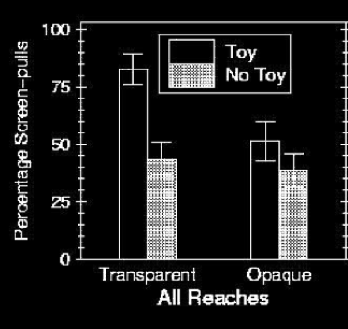Click here and press the right key for the next slide (or swipe left)
also ...
Press the left key to go backwards (or swipe right)
Press n to toggle whether notes are shown (or add '?notes' to the url before the #)
Press m or double tap to slide thumbnails (menu)
Press ? at any time to show the keyboard shortcuts
\section{The Question}

the question
This course is based on a simple question. The question is,
How do humans first come to know any facts at all about
objects, actions, and minds?
At the outset we know nothing, or not very much. (Like little Wy here.)
Sometime later we do know some things.
How does the transition occur?
We are going to approach this question by examining the evidence from developmental science,
exploring how it bears on philosophical positions like nativism and empiricsm,
and identifying philosophical problems created by the evidence.
Far from being a new question, it belongs to a family of questions about the origins of mind
that philosophers have been asking since Plato or before.
Here is John Locke asking a version of my question ...
‘... ’tis past doubt, that Men have in their Minds several Ideas, such as are those expressed by the words, Whiteness, Hardness, ... and others: It is in the first place to be enquired, How he comes by them?’\citep[p.\ 104]{Locke:1975qo}
(Locke 1689)
‘How does it come about that the development of organic behavior into controlled inquiry brings about the differentiation and cooperation of observational and conceptual operations?’\citep[p.\ 12]{Dewey:1938yp}
(Dewey 1938, p. 12)
‘the fundamental explicandum, is the organism and its propositional attitudes ... Cognitive psychologists accept ... the ... necessity of explaining how organisms come to have the attitudes to propositions that they do.’\citep[p.\ 198]{Fodor:1975pb}
(Fodor 1975, p. 198)
And here is a nativist, Jerry Fodor, asking much the same question.
Note that whereas Locke puts the question in terms of Ideas, Fodor, writing much later,
asks about propositional attitudes, that is, about states such as knowlegde and belief.
This difference need not concern us; we now have a much better understanding of the metaphysics
of mental states than Locke did.
Finally note that much the same question has been asked by philosophers coming at things from a
completely different---pragmatist, in this case---point of view.
Because he focusses on behaviour and mental operations rather than Ideas or states of mind,
he puts the question in terms of a transition from unthinking ('organic') behaviour
to capacities for observational and conceptual operations.
So my question about how we first come to know things in various domains is an ok question
for a philosopher to ask because it belongs to a family of questions that philosophers who
have been dead for a long time were asking.
One last thing.
Fodor mentions cognitive psychologists rather than philosophers. We will need to face up to
the question of why philosophers are asking this question about the origins of knowledge, why
is isn't just a scientific question. I'll come to this shortly.
\section{From Myths to Mechanisms}
How do humans first come to know about---and to knowingly manipulate---objects, causes, words,
numbers, colours, actions and minds?
In a beautiful myth, Plato (who also asked this question) suggests that the answer is
recollection.
Before we are born, in another world, we become acquainted with the truth.
Then, in falling to earth, we forget everything.
But as we grow we are sometimes able to recall part of what we once knew.
So it is by recollection that humans come to know about objects, causes, numbers and everything
else.
myths
Leibniz explicitly endorses a version of Plato's view.
‘the soul inherently contains the sources of various notions and doctrines which external objects merely rouse up on suitable occasions’
Leibniz (1996, p. 48)
\citep[p.\ 48]{Leibniz:1996bl}
The view is subtler than it seems: we'll return to the subtelties later.
[*Actually that isn't in these lectures, but it should be.]
Locke, as you probably know, was an empiricist. Here's his manifesto.
‘Men, barely by the Use of their natural Faculties, may attain to all the Knowledge
they have, without the help of any innate Impressions’
Locke 1975 [1689], p. 48
\citep[p.\ 48]{Locke:1975qo}
‘Developmental science [...]
has shown that both these views
are false’
\citep[p.\ 89]{Spelke:2007hb}.
(Spelke and Kinzler 2007, p. 89)
Spelke doesn't have exactly Locke vs Leibniz in mind here, but rather modern descendants
of their views.
[The quote continues ‘humans are endowed neither with a single, general-purpose learning system
nor with myriad special-purpose systems and predispositions. Instead, we believe that humans
are endowed with a small number of separable systems of core knowledge. New, flexible skills
and belief systems build on these core foundations.’]
Spelke's claim may be too bold. As we will see, there is surprisingly little evidence about
the conflict between empiricists and nativists.
A more cautious claim would be this. when we look at particular cases in detail---for
instance,
when we look at how humans come to know about colours---we will discover complexities that seem
to be incompatible with any one of the stories.
\section{Knowledge}

Uncomplicated Account of Knowledge
For any given proposition [There’s a spider behind the book] and any given human [Wy] ...
1. Either Wy knows that there’s a spider behind the book, or she does not.
2. Either Wy can act for the reason that there is, or seems to be, a spider behind the book (where this is her reason for acting), or else she cannot.
3. The first alternatives of (1) and (2) are either both true or both false.
\subsection{Uncomplicated Account of Minds and Actions}
For any given proposition [There’s a spider behind the book] and any given human [Wy]
...
\begin{enumerate}
\item Either Wy knows that there’s a spider behind the book, or she does not.
\item Either Wy can act for the reason that there is, or seems to be, a spider behind the book, or else she cannot.
\item The first alternatives of (1) and (2) are either both true or both false.
\end{enumerate}
The question we face---How do humans come to know about objects, actions, and
minds?---is a question about knowledge. Answering this question depends on
discovering when humans come to know what. And making these discov- eries
in turn depends on being able to distinguish really knowing something from
merely manifesting some symptoms associated with knowledge.
I take for granted that knowledge is constitutively linked to practical
reasoning and to inference. Let me explain. Knowledge is the kind of
thing that can typically influence how you act when you act purposively,
and it is the kind of thing that can influence purposive actions in any
domain at all. Knowledge is also the kind of thing that you can sometimes
arrive at by inference, and which can enable you to make new inferences
in any domain at all. A state that is not linked to practical reasoning
and to inference in these ways is not knowledge.
[continued in developing mind §1.2]

Uncomplicated Account of Knowledge
For any given proposition [There’s a spider behind the book] and any given human [Wy] ...
1. Either Wy knows that there’s a spider behind the book, or she does not.
2. Either Wy can act for the reason that there is, or seems to be, a spider behind the book (where this is her reason for acting), or else she cannot.
3. The first alternatives of (1) and (2) are either both true or both false.
\subsection{Uncomplicated Account of Minds and Actions}
For any given proposition [There’s a spider behind the book] and any given human [Wy]
...
\begin{enumerate}
\item Either Wy knows that there’s a spider behind the book, or she does not.
\item Either Wy can act for the reason that there is, or seems to be, a spider behind the book, or else she cannot.
\item The first alternatives of (1) and (2) are either both true or both false.
\end{enumerate}
The Uncomplicated Account could be elaborated to take into account
the fact that how people act depends on attitudes other than belief.
For example, much may depend on whether Wy likes, or fears, spiders.
Philosophers have done much of this elaboration, building on the Uncomplicated
Account by identifying features of belief adding attitudes like desire
and intention as well as fear and pride.
But there is a fundamental problem with the Uncomplicated Account,
one that probably can’t be fixed by elaborating it with further attitudes.
The problem is that, as we will see in a moment, there are cases in which
(2) turns out to be wrong and the connection between (1) and (2) breaks down.
If we want to understand what is going on in the head of an infant who is
in the process of developing capacities for knowledge, we will have to
fundamentally revise the Uncomplicated Account.
\section{Unperceived Objects: An Illustration}
If you've seen the outline of lectures, you'll know that my idea is to organise the lectures
by domains of knowledge.
As we will see, how we first come to know things about colours, say, isn't quite the same
as how we first come to know things about minds.
But there is one very general point we can make: in all these domains, we will face
Davidson's challenge, the challenge of explaining what is inbetween mindless behaviour
and thought.
objects
causes
colours
words
non-verbal communications
minds
actions
Let me preview how Davidson's challenge arises in the case of objects.
When do humans first come to know facts about the locations of objects they are not
perceiving?
A famous study by Renee Baillargeon and her collaborators provides evidence that humans can
represent unperceived objects from around four months of age or earlier.
This is called the 'drawbridge study'
What you are about to see are the test events from Experiment 1 of Baillargeon et al's
1987 study. You're looking at them from the side whereas the subjects, four-month olds,
were looking at them from the front (which is to your right).
In showing you these test events,
I need to explain the method used in this experiment, \emph{habituation};
this is a method we will encounter repeatedly so it's good to understand how it is
supposed to work.
%glossary: habituation
What you see here is a barrier rotating through 180 degrees.
Infants were habituated to this; that is, they were shown it repeatedly until it no longer
held their interest.
The first time they're shown this, they might spend 60 seconds looking at it, which is a long
time for an infant; but after, say, five demonstrations, they'd only be looking at it for
around 10 seconds. That is, they are habituated to this display.
![]()
\begin{center} \citealp{baillargeon:1987_object} figure 1 \end{center}
Baillargeon (1987, figure 1)
Now there is a very small change to the display.
The display is just as before, except for before the drawbridge moves an object is placed
behind it.
There are then two different things that could happen. One is that the drawbridge moves
exactly as before, rotating a full 180 degrees. This is called the 'impossible event'.
The other is that the drawbridge now rotates for 120 degrees, which is the 'possible event'.
In no case is the object visible after the drawbridge has started moving.
We want to know which events infants find more novel.
If they are unable to know facts about the locations of unperceived objects, then they should
find the
'possible event' more novel than the 'impossible event' because it is more different
from the event they have been habituated to.
On the other hand, if infants are able know facts about the locations of unperceived objects,
they should find the impossible event more novel than the possible event because, well,
it's impossible.
To find out what infants find more interesting, they are divided into two groups.
One group sees the impossible event, the other the possible event.
The experimenters measure how long the infants look at these events, which is the measure of
their dishabituation. The background assumptions are that looking longer indicates more
interest, and that interest is driven by novelty.
In the control condition,
'The habituation event was exactly the same as the impossible event, except that the yellow
box was absent.' (Baillargeon et al 1985, 200)
These are the results from Experiment 1 of Baillargeon et al's 1987 study.
This experiment provides evidence that infants know that the object is behind the barrier
even when they can't see it, for their having such knowledge would explain why they appear
surprised by the impossible event.
![]()
\begin{center} \citealp{baillargeon:1987_object} figure 2 \end{center}
source: Baillargeon et al (1987, figure 2)
Here you can see, reassuringly, that the effect is not present in the control condition
where the box is absent.
Some have been critical of the methods used in this experiment.
But not everything hangs on this experiment.
Fortunately there are at least a hundred further experiments which provide evidence pointing in the same direction.
Later we'll look at this is more detail.
When do humans first come to know facts about the locations of objects they are not perceiving?
look: by 4 months of age or earlier (Baillargeon 1987).
This result has been widely replicated, and it coheres with a large body of research we shall
explore later.
look: by around 2.5 months of age or earlier (Aguiar & Baillargeon 1999, Experiment 2)
By using more sensitive methods, \citet{Aguiar:1999jq} even demonstrated competence in a group
of 2.5 month old infants.
So far so good, but there is a problem ...
What happens if instead of measuring how infants look, we measure how they reach?
\citet{Shinskey:2001fk} did just this.
Here you can see their appratus, which is quite similar to what \citet{baillargeon:1987_object}
used.
They had a screen that infants could pull forwards to get to an object that was sometimes
hidden behind it.
They made two comparisons.
First, were infants more likely to pull the screen forwards when an object was placed behind it?
Second, were how did infants' performance compare when the barrier was not opaque but transparent?
Shinskey and Munakata 2001, figure 1
Here are their results with 7-month old infants.
Shinskey and Munakata 2001, figure 2
We are interested in whether infants were more likely to pull the screen forwards when the
object was present than when it was absent.
Since infants wanted the toy, if they knew it was behind the barrier they should have pulled
forward the barrier more often when the toy was behind it.
This is exactly what they did when the barrier was transparent.
But look what happens when the barrier is opaque, so that the toy is not visible to infants
when they have to prepare the pulling action: they no longer pull the barrier more often
when the toy was behind it.
This is good evidence that 7 month olds do not know facts about the locations of objects
they cannot perceive.
And this is not isolated evidence; for example, \citet{moore:2008_factors} use a different
methods also involving manual search to provide converging evidence for this conclusion.
But now we have a problem ...
When do humans first come to know facts about the locations of objects they are not perceiving?
look: by 4 months of age or earlier (Baillargeon 1987).
look: by around 2.5 months of age or earlier(Aguiar & Baillargeon 1999, Experiment 2)
search: not until after 7 months of age (Shinskey & Munakata 2001)
‘action demands are not the only cause of failures on occlusion tasks’
Shinskey (2012, p. 291)
‘the tip of an iceberg’ Charles & Rivera (2009, p. 994)
The evidence appears to be contradictory.
By measuring looking actions, we find infants can distinguish situations in ways that indicate
they do know facts about the locations of particular unperceived objects.
But when measuring retrieval or searching actions, we find infants cannot distinguish these
situations; this indicates that they cannot know this.
You might hope there would be a simple solution. Perhaps, for example, infants have
difficulties reaching that mask their real knowledge of the facts about unperceived objects'
locations.
But As Jeanne Shinskey, one of the researchers most dedicated to this issue says,
‘action demands are not the only cause of failures on occlusion tasks’
\citep[p.\ 291]{shinskey:2012_disappearing}.
Many such explanations have been tried because many researchers have been puzzled by this;
\citet{Meltzoff:1998wp} go as far as to call it a paradox (the 'paradox of early permanence').
No explanation positing extraneous task requirements, such as difficulties performing
an the actions required, has yet succeeded.
This is a discrepancy between two types of measure; one involves looking, other other
searching.
We find this pattern--discrepant findings pointing to opposite conclusions about what
infants and adults know--in many different domains.
As \citet[p.\ 994]{charles:2009_object} put it, these findings are ‘the tip of an iceberg’.
‘violation-of-expectation experiments, using looking-time measures, suggested that infants
have object permanence in occlusion conditions; but simplified-search studies confirm that
infants fail to reach towards occluded objects, suggesting that infants do not have object
permanence in occlusion conditions. This discrepancy, however, is only the tip of the
iceberg. Results of studies attempting to measure infants’ cognitive abilities using reaching
measures often contradict results gained while using looking-time measures.’
\citep[p.\ 994]{charles:2009_object}
What is the problem?
You might be wondering whether there's a philosophical problem here.
Science is a messy business and you get conflicting results all the time.
But this particular pattern of conflicting results is extremely interesting philosophically.
It shows that we cannot say that, at, say, five months of age, infants know facts about the
locations
of particular unperceived objects.
We cannot say this because doing so generates predictions which are clearly false (predictions
about where they will search for an unperceived object).
But it also shows that we cannot say that they have no sense at all concerning facts about the
locations of particular unperceived objects. We cannot say this because of the
competence they manifest in distinguishing possible from impossible events.
The problem, then, is that understanding the origins of knowledge requires us to identify
something inbetween knowledge and its absence, something that is like knowledge in some
respects but falls short of it in others.
This is an instance of Davidson's challenge ...
Uncomplicated Account of Knowledge
For any given proposition [There’s a spider behind the book] and any given human [Wy] ...
1. Either Wy knows that there’s a spider behind the book, or she does not.
2. Either Wy can act for the reason that there is, or seems to be, a spider behind the book (where this is her reason for acting), or else she cannot.
3. The first alternatives of (1) and (2) are either both true or both false.
\subsection{Uncomplicated Account of Minds and Actions}
For any given proposition [There’s a spider behind the book] and any given human [Wy]
...
\begin{enumerate}
\item Either Wy knows that there’s a spider behind the book, or she does not.
\item Either Wy can act for the reason that there is, or seems to be, a spider behind the book, or else she cannot.
\item The first alternatives of (1) and (2) are either both true or both false.
\end{enumerate}
Think of the spider as the object behind Baillargeon’s drawbridge
and behind Shinskey and Munakata’s screens.
Can Wy (the infant) act for the reason that there is an object behind
the drawbridge?
Yes: she looks longer when the drawbridge rotates 180 degrees
for the reason that there is an object behind it.
No: if she could act for the reason that there is an object behind
behind Shinskey and Munakata’s screens, then she would search for that object.
So Wy is awkward. She can do some things for the reason that there is an
object behind a screen (e.g. look longer), but she cannot do other things
for this reason.
This is not allowed for by the Uncomplicated Account of Minds and Actions.
We can’t say Wy belives that there is an object
behind the screen.
In the absence of obstacles such as
time pressure, distraction, motivations to be irrational, self-deception
or exhaustion, humans will act in ways that are approximately rational given
their beliefs and other attitudes.
So the hypothesis that Wy belives that there is an object
behind the screen generates the incorrect prediction that she will manipulate the screen
to reveal that object. Which she does not.
I’ve suggested that we can’t say that Wy belives that there is an object
behind the screen.
Yes, puzzlingly, she can perform some actions for the reason that
there is an object behind the screen.
So she is not entirely neutral on whether there is an object behind the screen.
This is an objection to the correctness of the Uncomplicated Account of Minds and Actions.
It doesn’t work, at least not for infants.
(Later I’ll suggest it doesn’t work for adults either, if you look closely enough
at what they’re doing.)
\textit{Object permanence}:
the ability to know facts about objects you aren't currently perceiving.
\section{Davidson’s Challenge}
‘We have many vocabularies for describing nature when we regard it as mindless, and we have a mentalistic vocabulary for describing thought and intentional action; what we lack is a way of describing what is in between’ \citep[p.\ 11]{Davidson:1999ju}
Why suppose there is any role for philosophers rather than scientists?
Part of the answer is provided by Donald Davidson.
The question is how humans come to know about objects, words, thoughts and other things.
In pursuing this question we have to consider minds where the knowledge is neither clearly
present nor obviously absent.
This is challenging because both commonsense and theoretical tools for describing minds are
generally designed for characterising fully developed adults.
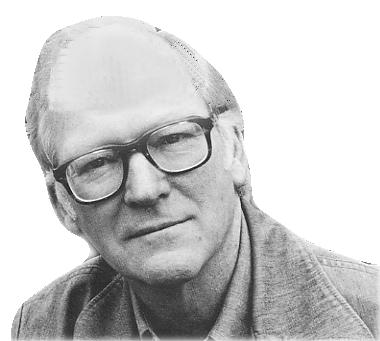
‘if you want to describe what is going on in the head of the child when it has a few words which it utters in appropriate situations, you will fail for lack of the right sort of words of your own.
‘We have many vocabularies for describing nature when we regard it as mindless, and we have a mentalistic vocabulary for describing thought and intentional action; what we lack is a way of describing what is in between’
(Davidson 1999, p. 11)
I love this: Davidson says we will fail. So encouraging.
But why will we fail?
Is he suggesting the issue is merely terminological? Not quite ...
So this is the challenge. We are describing something which is neither mindless
nor involving full-blown thought and action. And, as Davidson observes, we lack
a way of describing what is in between.
The question about the origins of mind is in part a philosophical question because
answering it will require new conceptual tools.
This challenge is one that we will face again and again.
\section{Core Knowledge}
‘there is a third type of conceptual structure,
dubbed “core knowledge” ...
that differs systematically from both
sensory/perceptual representation[s] ... and ... knowledge.’
Carey, 2009 p. 10
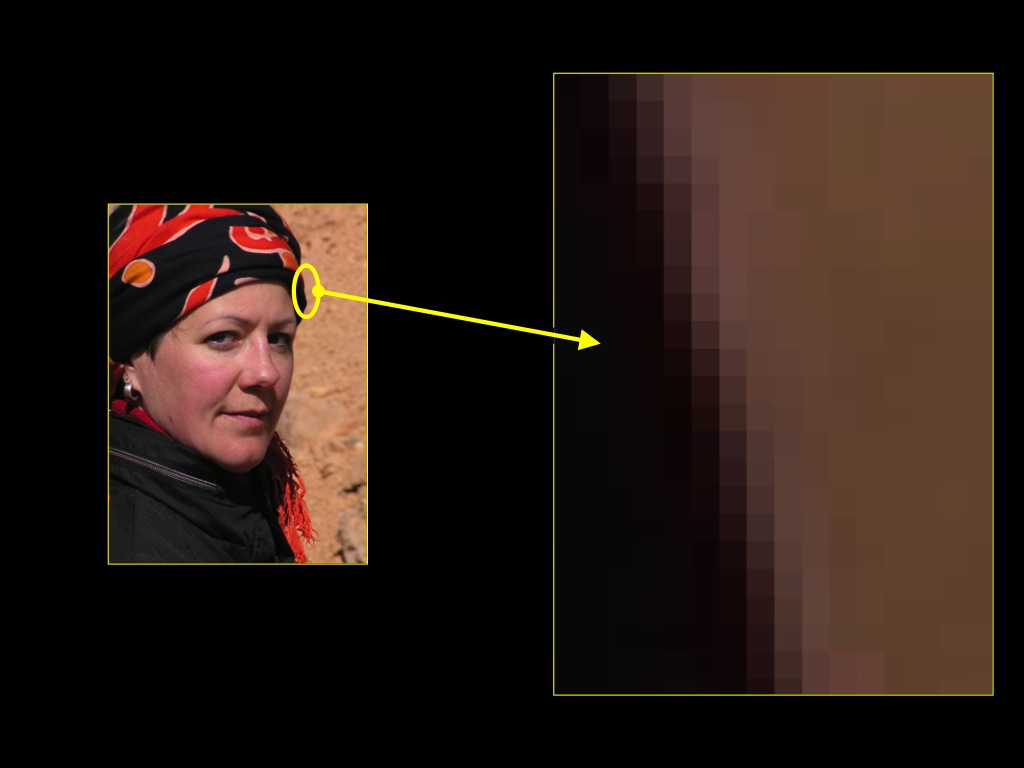
What do people say core knowledge is?
\subsection{Two-part definition}
There are two parts to a good definition. The first is an analogy that helps us get a fix on what we is meant by 'system' generally. (The second part tells us which systems are core systems by listing their characteristic features.)
‘Just as humans are endowed with multiple, specialized perceptual systems, so we are endowed with multiple systems for representing and reasoning about entities of different kinds.’
\citep[p.\ 517]{Carey:1996hl}
(Carey and Spelke 1996: 517)
So talk of core knowledge is somehow supposed to latch onto the idea of a system.
What do these authors mean by talking about 'specialized perceptual systems'?
They talk about things like perceiving colour, depth or melodies.
Now, as we saw when talking about categorical perception of colour, we can think of the 'system' underlying categorical perception as largely separate from other cognitive systems--- we saw that they could be knocked out by verbal interference, for example.
So the idea is that core knowledge somehow involves a system that is separable from other cognitive mechanisms.
As Carey rather grandly puts it, understanding core knowledge will involve understanding something about 'the architecture of the mind'.
Illustration: edge detection.
‘core systems are
- largely innate
- encapsulated
- unchanging
- arising from phylogenetically old systems
- built upon the output of innate perceptual analyzers’
\citep[p.\ 520]{Carey:1996hl}.
(Carey and Spelke 1996: 520)
\textit{Note} There are other, slightly different statements \citep[e.g.][]{carey:2009_origin}.
This, them is the two part definition. An analogy and a list of features.
representational format: iconic (Carey 2009)
There is one more feature that I want to mention; this is important although I won't disucss it here.
To say that a represenation is iconic means, roughly, that parts of the representation represent parts of the thing represented.
Pictures are paradigm examples of representations with iconic formats.
For example, you might have a picture of a flower where some parts of the picture represent the petals and others the stem.
When do humans first come to know facts about the locations of objects they are not perceiving?
look: by 4 months of age or earlier (Baillargeon 1987).
look: by around 2.5 months of age or earlier(Aguiar & Baillargeon 1999, Experiment 2)
search: not until after 7 months of age (Shinskey & Munakata 2001)
‘action demands are not the only cause of failures on occlusion tasks’
Shinskey (2012, p. 291)
‘the tip of an iceberg’ Charles & Rivera (2009, p. 994)
Recall our problem ...
Maybe the problem is that we are thinking only in terms of knowledge.
If we recognise that there are additional kinds of mental state,
perhaps the problem goes away.
Does understanding the developmental emergence of knowledge require postulating novel kinds of mental state (e.g. ‘core knowledge’)?
This is a question that will occupy us throughout the course,
but have a guess now.
\section{Two Breakthroughs}
Recall that the question for this course is ...
Our focus is on two breakthrough sets of findings.
One concerns core knowledge, the other social interaction.
core knowledge
Take core knowledge first.
We will see that infants can tackle physics, number, agents and minds thanks to a set of
innate or early-developing abilities, often labelled `core knowledge'.
We don't understand it.
For now, let us use the term `core knowledge' to mean whatever infants have concerning
the locations of particular objects which is not knowledge but which underpins their
abilities to discriminate between phyiscally possible and physically impossible
sitatuions where the difference between possibile and impossibile depends on facts about
objects the infants are not currently perceiving.
It is important that we don't (yet) know what core knowledge is; `core knowledge' is a
term of art. I haven't explained what it is.
[*needs updating!]
Our position is this.
Some scientists talk about core knowledge, and formulate hypotheses in terms of it.
Since these hypotheses are supported by evidence, we can reasonably suppose they are true.
So there are some things we provisionally suppose are truths about core knowledge.
For instance, infants' core knowledge enables them to represent unperceived objects.
So we know some truths about core knowledge, but we don't know what it is.
You'd probably prefer it if I could tell you what core knowledge is first.
But here we have to work backwards.
We have to gather truths about this unknown thing, core knowledge.
And then we have to ask, What could core knowledge be given that these things are true?
Is like knowledge:
- guides behaviour
- involves something like inference
- concerns abstract features
Is unlike knowledge:
- no inferential integration
- judgement-independent
- domain-specific
- signature limits
Several features distinguish core knowledge from adult-like understanding: its content is
unknowable by introspection and judgement-independent; it is specific to quite narrow
categories of event and does not grow by means of generalization; it is best understood
as a collection of rules rather than a coherent theory; and it has limited application
being usually manifest in the control of attention (as measured by dishabituation, gaze,
and looking times) and rarely or never manifest in purposive actions such as reaching.
social interaction
Now, what about social interaction? First let me mention what people say about it.
Preverbal infants manfiest a surprising range of social abilities.
These include imitation, which can occur just days and even minutes after birth
(Meltzoff & Moore 1977; Field et al. 1982; Meltzoff & Moore 1983), imitative learning
(Carpenter et al. 1998), gaze following (Csibra & Volein 2008), goal ascription
(Gergely et al. 1995; Woodward & Sommerville 2000), social referencing (Baldwin 2000)
and pointing (Liszkowski et al. 2006).
Taken together, the evidence reveals that preverbal infants have surprisingly rich
social abilities.
- imitation
- gaze following
- secondary intersubjectivity
- social referencing
- pointing
- goal ascription
- joint action
- language creation
Perhaps the best evidence how sophisticated infant social interaction can be comes
from studies of language creation.
(This will be a key topic when we come to study knowledge of language, but let me
give you a tiny preview.)
Children with no experience of others' languages can create their own languages.
We know this from studies of profoundly deaf children brought up in purely oral
environments and therefore without experience of language
\citep{Kegl:1999es,Senghas:2001zm,Goldin-Meadow:2003pj}.
Individually or in groups these children invent their own signed languages.
These languages are not as rich as those of children with experience of other
people's languages but they have all of the essential features of language
including lexicons and syntax (*refs: Goldin-Meadow 2002, 2003).
The children invent gesture forms for words which they use with the same meanings
in different contexts, they adopt standard orderings for combining words into
sentences, and they use sentences in constructing narratives about past, present,
future and hypothetical events (*ref: Goldin-Meadow 2003: 170).
But it is not just children in extreme circumstances that create words.
Children in ordinary environments will create their own words before they learn to
use those of the adults; when children start speaking, it is often the adults who
are learning new words.
(‘Some children are so impatient that they coin their own demonstrative pronoun. For
instance, at the age of about 12 months, Max would point to different objects and
say “doh?,” sometimes with the intent that we do something with the objects, such as
bring them to him, and sometimes just wanting us to appreciate their existence’
(\citealp[p.\ 122]{Bloom:2000qz}; see further \citealp{Clark:1981bi,Clark:1982hj}).)
And even where children have mastered a lexical convention, they will readily violate
it in their own utterances in order to get a point across.
(‘From the time they first use words until they are about two or two-and-a-half,
children noticeably and systematically overextend words. For example, one child used
the word “apple” to refer to balls of soap, a rubber-ball, a ball-lamp, a tomato,
cherries, peaches, strawberries, an orange, a pear, an onion, and round biscuits’
\citep[p.\ 35]{Clark:1993bv}.)
core knowlegde + social interaction
One problem for us is that these two sets of findings are typically considered in
isolation,
although I think there are strong reasons to suppose that understanding the origins
of knowledge
will require thinking about both core knowledge and social interaction.
One of our challenges will be to understand how core knowledge and social interaction
conspire in driving the emergence of knowledge in particular domains.
working hypothesis:
core knowledge in certain domains is necesary
for early forms of social interaction
and these forms of social interaction are necessary
to get from core knowledge of Xs to knowledge proper of Xs
My working hypothesis (in two parts)
is that core knowledge in certain domains is necesary for early forms of
social interaction
and that these early forms of social interaction are necessary to get from core knowledge
to knowledge knowledge.
development as (re)discovery
The idea, in essence, is that cognitive development is a kind of (re)discovery.
(But not exactly as Plato's myth had it.)
How do humans get from core knowledge to knowledge knowledge?
I want to suggest that it involves a process of (re)discovery.
I don't think it's a case of partial knowledge becoming gradually more complete, or of
the core knowledge providing content for later knowledge states.
Rather, I think the core knowledge shapes the
subject's body, behaviour and attention in ways that facilitate discovery at the next stage.
And, most importantly, core knowledge enables increasingly sophisticated forms of social
interaction.
It is these social interactions---together with the bodily, behavioural and mental changes---that
enable subsequent re-discoveries.
So, on this view, the role of some early-developing abilities in explaining the later acquisition
of conceptual understanding does not involve direct representational connections;
rather the early developing abilities facilitate or enable social interaction,
influence attention and inform behaviour;
and these influences facilitate development.
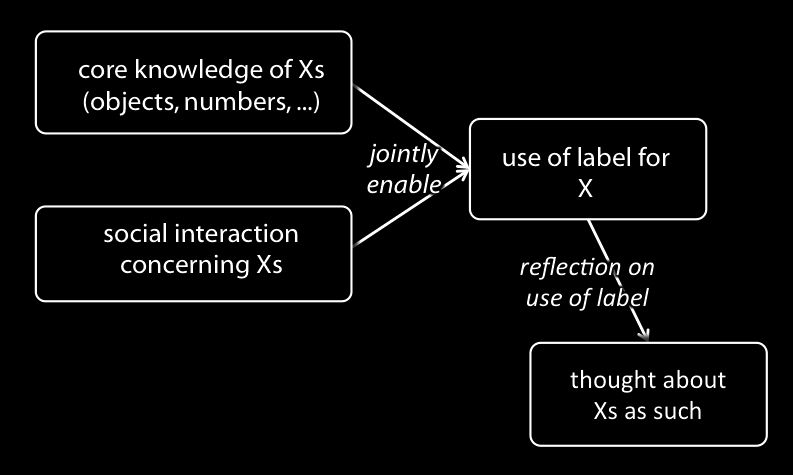
To make this vague idea slightly more concrete, let me zoom in.
I think having verbal labels for things sometimes helps with acquiring concepts of them.
Now this sounds paradoxical.
Doesn't having a label for something mean being able to label correctly?
And how could you label correctly without the corresponding concept?
My suggestion is that having core knowledge is not having a concept (many disagree);
but core knowledge could underpin your correct use of a label.
Now labels are acquired through social interaction, or so I suggested earlier.
Hence the picture.
Now this picture needs two qualifications.
First, it's missing some details, and these details will vary from case to case
(what's true of knowledge of objects might not be true of knowledge of number).
Second, the picture might be completely wrong.
But even if the picture is wrong, I'll bet that social interaction and core knowledge are both
essential for explaining how humans come to know things.
So I don't claim to know how these two are necessary, only that they are.
In fact my aim isn't primarily to explain to you how these two factors explain the origins of
mind.
Instead my hope is this.
I'll give you the background on social interaction and core knowledge.
And you'll tell me how these two (or perhaps other factors) are involved in explaining how
humans come to know things about objects, colours, actions, numbers and the rest.
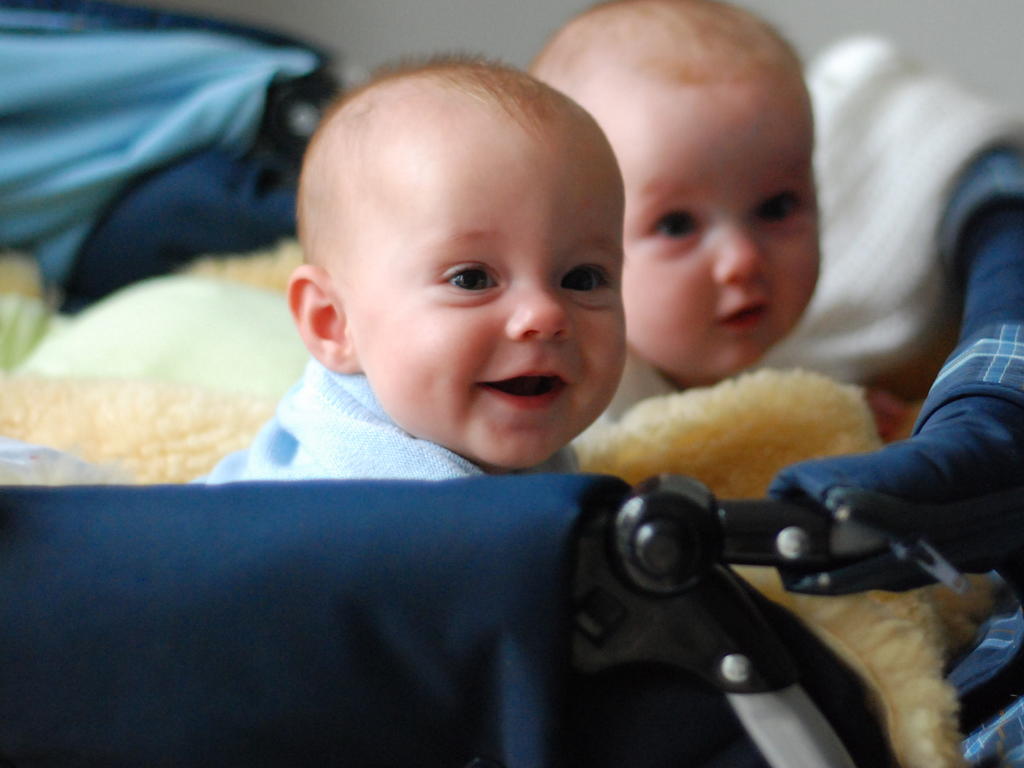
Social Interaction: Acquiring Your First Words
\section{Social Interaction: Acquiring Your First Words}
So far I have focussed on the nature of mental states and actions.
This will indeed be a big theme.
But a second big theme concerns the nature of social interaction.
I’m quite struck by the fact that in science, research on the
developmental origins of mind is neatly divided between researchers
who want to know what is going on the head of an infant
and researchers who want to know how infants interact with others and
how these interactions facilitate their development.
It seems obvious that we need to integrate both perspectives.
This turns out not to be trivial.
Here is a bold conjecture about how humans come to know things.
\subsection{A Conjecture}
‘humans acquire knowledge at a pace far outstripping that found in any other species.
Recent evidence indicates that interpersonal understanding ...
plays a pivotal role in this achievement.’
\citep[p.\ 40]{Baldwin:2000qq}
Baldwin 2000, p. 40
‘functions traditionally considered hallmarks of individual cognition originated through
the need to interact with others ...\ perception, action, and cognition are grounded in
social interaction.’
\citep[p.\ 103]{Knoblich:2006bn}
Vygotskian Intelligence Hypothesis:
‘the unique aspects of human cognition ... were driven by, or even constituted by,
social co-operation.’
\citep[p.\ 1]{Moll:2007gu}
Moll & Tomasello 2007, p. 1
‘human cognitive abilities ... [are] built upon social interaction’
\citep{sinigaglia:2008_roots} %*page
The challenge, of course, is to say *how* social interaction enables humans to come to
know things.
Let me give you a hint about why social interaction will be important now.
As in the case of knowledge of objects, this is a preview of a topic
that we will later consider in more detail.
\subsection{How do children acquire words?}
How do children acquire their first words?
Our question is, How do humans first come to communicate using words?
Let's start with Bertrand Russell.
‘A child learning to speak is learning habits and associations which are just as much determined by the environment as the habit of expecting dogs to bark and cocks to crow’
\citep[p.\ 71]{Russell:1921ww}
(Russell 1921, p. 71)
But how does the environment determine habits and associations?
Wittgenstein suggests that the habits are determined by training.
‘[t]he child learns this language from the grown-ups by being trained to its use. I am using the word ‘trained’ in a way strictly analogous to that in which we talk of an animal being trained to do certain things. It is done by means of example, reward, punishment, and suchlike’
\citep[p.\ 77]{Wittgenstein:1972lj}
(Wittgenstein 1972, p. 77).
But how does this training work?
But now what are these habits and associations?
One answer is suggested by Quine.
‘the child’s early learning of a verbal response depends on society's reinforcement of the response in association with the stimulations that merit the response’
(\citep[p.\ 82]{Quine:1960fe}; compare \citep[pp.\ 28--9]{Quine:1974rd})
(Quine 1960, p. 82)
So this is the picture.
For each word, there is a set of 'stimulations' in response to which an utterance of that word would be appropriate.
For instance, we might suppose there's a set of banana stimulations in response to which an utterance of the word 'banana' would be appropriate.
The child then comes to use the word 'banana' in response to the bananana-stimuluations by means of being trained.
She is rewarded for using 'banana' correctly or punished for using it incorrectly (or both) and so she gradually zeros in on the correct pattern of use.
infant
stimulations -> utter 'nana'
rat
stimulations -> press lever
‘Crying is the first step toward
language when crying is found to procure one or another form of relief or
satisfaction. More specific sounds, imitated or not, are rapidly associated
with more specific pleasures’
This seems to be approximately Davidson's own view.
‘Before we have an idea of truth or error, before the advent of concepts or propositional thought,
‘there is a rudiment of communication in the simple discovery that sounds produce results. Crying is the first step toward language when crying is found to procure one or another form of relief or satisfaction. More specific sounds, imitated or not, are rapidly associated with more specific pleasures.
Here use //p. 71// would be meaning, if anything like intention and meaning were in the picture.
(Davidson 2000: 70-1; see also Davidson 1999: 11).
\citep[pp.\ 70--1]{Davidson:2000mt}
Assumption:
If someone can think, she can communicate with words.
Consequence:
Acquiring words cannot involve thinking at the outset.
Question:
How could someone begin to acquire create words without being able to think?
Answer:
By being trained to utter a particular word in response to certain simulations!
But:
How do children actually acquire their first words?
Children acquiring language create their own words before they learn to use those of the adults
around them.
‘Some children are so impatient that they coin their own demonstrative pronoun. For
instance, at the age of about 12 months, Max would point to different objects and say
“doh?,” some¬times with the intent that we do something with the objects, such as bring
them to him, and sometimes just wanting us to appreciate their existence’
(\citealp[p.\ 122]{Bloom:2000qz}; see further \citealp{Clark:1981bi,Clark:1982hj}).
Even where children have mastered a lexical convention, they will readily violate it in
their own utterances in order to get a point across.
‘From the time they first use words until they are about two or two-and-a-half,
children noticeably and systematically overextend words. For example, one child used
the word “apple” to refer to balls of soap, a rubber-ball, a ball-lamp, a tomato,
cherries, peaches, strawberries, an orange, a pear, an onion, and round biscuits’
\citep[p.\ 35]{Clark:1993bv}
children create and creatively adapt words before (and after) learning those of the adults around them
INVESTIGATOR: what is that called?
SHEM: dat's uh vam.
INVESTIGATOR: a vam?
SHEM: yeah.
INVESTIGATOR: why is it called a vam?
SHE: it vams all duh room ups all the water up ...
source: Eve Clark's CHILDES data
(Clark 1982; MacWhinney 2000)
homesigns
Try to imagine you have never communicated linguistically with anyone. You realise that other people interact much more easily that you can. You're sitting here and everyone else is concentrating or making notes and obviously getting something out of being here that you aren't. But what? What is it that they are doing and how are they doing it?
Some deaf children in North America are brought up in purely oral environments without any sign language and therefore don't experience language at all. These children invent their own sign languages, which are called homesigns. Their invented languages are not as rich as those of children who experience other people's languages, but they have many of the same features (Goldin-Meadow 2002, 2003). These deaf children have somehow worked out for themselves what linguistic communication is and they have found a way of doing it. They have invented languages with no prior experience of language, and they have invented languages in a modality that people around them barely use in linguistic communication. These linguistically isolated deaf children have answered in practice the questions that these lectures are about.
What are their languages like? Here are some examples ...
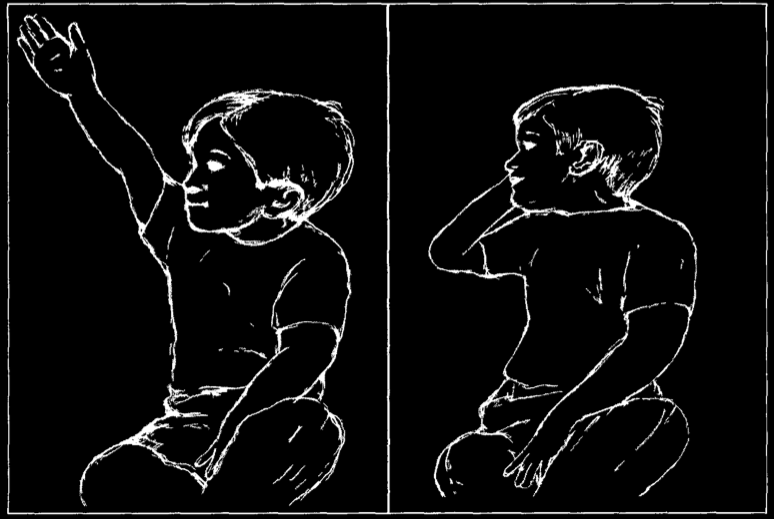
Goldin-Meadow (2003, figure 1)
“Pointing at the Present to Refer to the Non-Present. David points at the chair at the head of the dining room table in his home and then produces a “sleep” gesture to tell us that his father (who typically sits in that chair) is asleep in another room. He is pointing at one object to mean another and, in this way, manages to use a gesture that is grounded in the present to refer to someone who is not in the room at all” (Goldin-Meadow 2003: 74, figure 1)
Children can create their own languages
with no experience of others' languages
\citep{Kegl:1999es,Senghas:2001zm,Goldin-Meadow:2003pj}.
We know this from studies of profoundly deaf children brought up in purely oral
environments and therefore without experience of language (Goldin-Meadow 2003; Kegl,
Senghas and Coppola 1999; Senghas and Coppola 2001).
Individually or in groups these children invent their own signed languages.
These languages are not as rich as those of children with experience of other people's
languages but they have all of the essential features of language including lexicons and
syntax (Goldin-Meadow 2002, 2003).
The children invent gesture forms for words which they use with the same meanings in
different contexts, they adopt standard orderings for combining words into sentences,
and they use sentences in constructing narratives about past, present, future and
hypothetical events. Thus one profoundly deaf child, Qing, describes how swordfish can
poke a person so that she dies, and how they have long, straight noses and can swim
(Goldin-Meadow 2003: 170).
“Examples of Conventional Emblems Whose Meanings Are Not as Transparent as They Seem. In panel A, David is shown producing a “break” gesture. Although this gesture looks like it should be used only to describe snapping long thin objects into two pieces with the hands, all of the children used the gesture to refer to objects of a variety of sizes and shapes, many of which had not been broken by the hands. In panel B, Marvin is shown producing a “give” gesture. This gesture looks like it should mean “put something small in my hand,” but all of the children used it to request the transfer of an object, big or small, to a place that was not necessarily the child's hand. Thus, many of the gestures that the deaf children used were not as transparent in meaning as a quick glance would suggest” (Goldin-Meadow 2003: 76, figure 2).
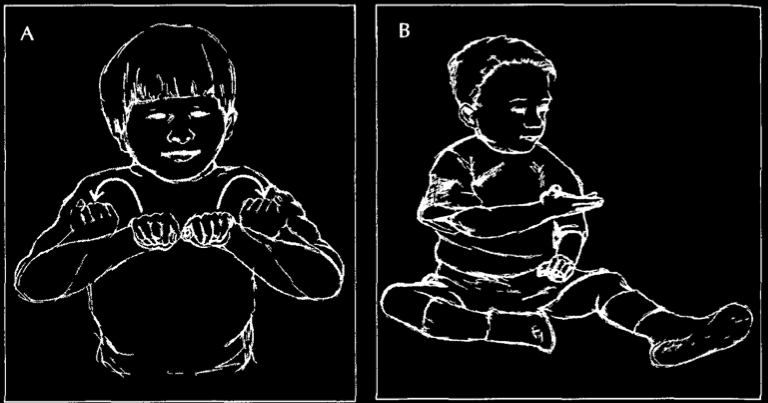
Goldin-Meadow (2003, figure 2)
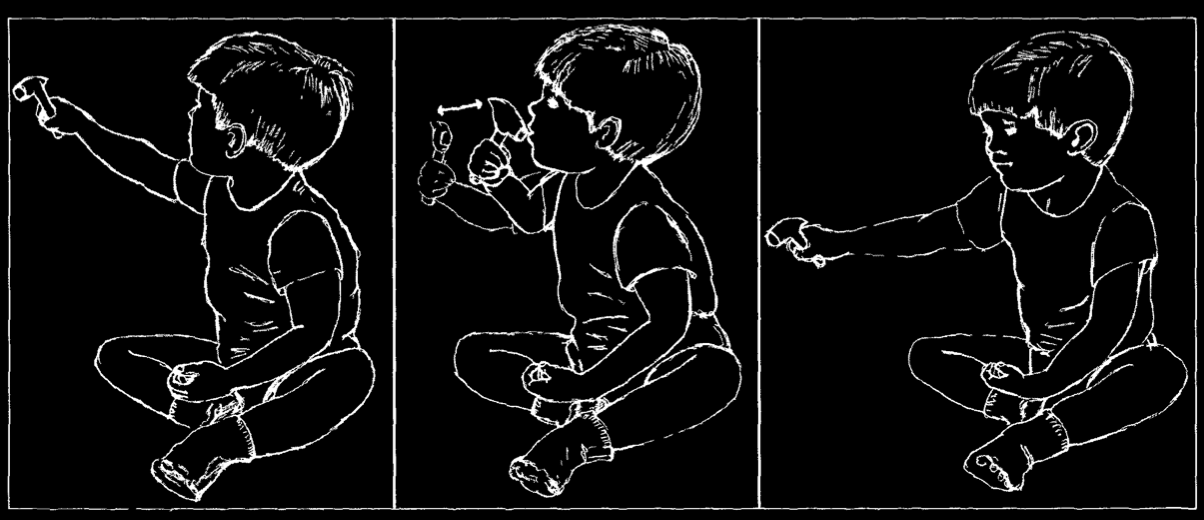
Goldin-Meadow (2003, figure 11)
“David is holding a toy and uses it to point at a tray of snacks that his mother is carrying = snack (the tray is not shown in the drawing). Without dropping the toy, he jabs it several times at his mouth = eat. Finally, he points with the toy at me sprawled on the floor in front of him (not shown) = Susan” (Goldin-Meadow 2003: 110, figure 1).

“With this long string of gestures, all produced before she relaxed her hands, Qing is indicating that swordfish can poke a person (proposition 1) so that the person becomes dead (proposition 2), that they have long, straight noses (proposition 3), and that they swim (proposition 4)” (Goldin-Meadow 2003: 170).
In more detail: “Complex Gesture Sentences. Qing [Chinese child] produces five distinct gestures that she combines into a single complex gesture sentence (that is, she produces the string of gestures without breaking her flow of movement). The five gestures are illustrated in this figure: Qing points at a picture of a swordfish (= swordfish). She jabs at her own chest as though piercing her heart (= poke-in-chest). She crooks her index finger and holds it in the air (this is an emblem in Taiwan that hearing speakers use to mean dead). She holds her index finger on her nose and extends it outward (= long-straight-nose). She wiggles her palm back and forth (= swim).” (Goldin-Meadow 2003: 171, figure 22)
Goldin-Meadow (2003, figure 22)
Can we say something about the general features of homesigns?
Gesture forms are:
- stable
'gesture forms do not change capriciously with changing situations'
i. ‘The gestures are stable in form, although they needn’t be. It would be easy for the children to make up a new gesture to fit every new situation (and, indeed, that appears to be what hearing speakers do when they gesture along with their speech, cf. McNeill, 1992). But that’s not what the deaf children do. They develop a stable store of forms which they use in a range of situations-they develop a lexicon, an essential component of all languages (Goldin-Meadow, Butcher, Mylander, & Dodge, 1994).’ \citep[p.\ 1389]{Goldin-Meadow:2002dq}
- arbitrary
'gesture--meaning pairs have arbitrary aspects within an iconic framework'
- systematic
'the gestures the children develop are composed of parts that form paradigms, or systems of contrasts. When the children invent a gesture form, they do so with two goals in mind-the form must not only capture the meaning they intend (a gesture-world relation), but it must also contrast in a systematic way with other forms in their repertoire (a gesture-gesture relation).' \citep[p.\ 1389]{Goldin-Meadow:2002dq}
Gesture forms are used:
- with different forces (to ask questions, make comments, request things, ...)
- to talk about past, future and hypothetical things
- to tell stories
- to communicate with oneself
- to talk about gestures (metalanguage)
Goldin-Meadow 2002
social interaction
So how is this related to the idea (mentioned a moment ago)
that social interaction plays a key role in the developmental emergence of knowledge?
My suggestion, to be developed more fully later in the couse,
is that children come to know their first words not through
being trained or taught, nor through observing others and mapping words to concepts.
Instead, some children come to know their first words through
creating words and making themselves understood to others.
That is, through social interaction.
One consequence of this is that it seems we must reject the
claim, made by Davidson and others, that
If someone can think, she can communicate with words ...
Assumption:
If someone can think, she can communicate with words.
Consequence:
Acquiring words cannot involve thinking at the outset.
Question:
How could someone begin to acquire create words without being able to think?
Answer:
By being trained to utter a particular word in response to certain simulations!
But:
How do children actually acquire their first words?
We’ve just been considering how children do acquire their first words.
So here's my challenge to Davidson and others who hold that anyone can communicate with language can think:
explain how someone could begin to create words without already being able to think.
As I've been explaining, the challenge arises because children who have no language and no significant experience of language can create languages of their own.
So we have to reject this answer.
For my part, I think it's probably time to drop the assumption.
Not because we've shown it's wrong, but because there's no good argument for it an a
significant obstactle to accepting it.
So let's return to our overall question without that assumption.
(Recall that the question was, How do humans first come to communicate with words?)

conclusion
In conclusion, ...
Our question is, How do humans come to know about objects, actions, and minds?
Apparently discrepant findings are an obstacle to answering this question.
Two breakthroughs (core knowledge; social interaction) are relevant.






